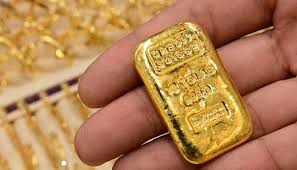Gold has been a cornerstone of human civilization for millennia, captivating the imagination of cultures, empires, and individuals alike. From its first discovery in ancient riverbeds to its τιμη χρυσου σημερα το γραμμαριο status as a global economic anchor, gold has remained an enduring symbol of wealth, power, and beauty. But what is it about this precious metal that makes it so universally revered and sought after?
The Physical Properties of Gold: A Perfect Element
Gold is a chemical element with the symbol Au (from the Latin aurum) and atomic number 79. It is a soft, malleable, and ductile metal that does not tarnish, corrode, or rust, which gives it a unique permanence in the natural world. Its bright, yellow hue, coupled with its rarity, makes it instantly recognizable, adding to its mystique.
Unlike many other metals, gold is found in its native form—pure and uncombined with other elements—often as nuggets in riverbeds or embedded in rocks. This makes it easily accessible in its purest state, a feature that many ancient civilizations would have seen as a divine gift.
Gold in Ancient Civilizations: A Sacred Metal
The story of gold begins long before the dawn of recorded history. Ancient Egyptians, for example, used gold to craft the iconic jewelry, amulets, and burial masks that accompanied their pharaohs into the afterlife. Gold represented the sun and was considered the flesh of the gods. The legendary mask of King Tutankhamun, made from over 22 pounds of pure gold, remains a testament to how this precious metal was deeply intertwined with both spiritual and material power.
Gold’s allure also spread across other ancient cultures, from the Mesopotamians to the Inca. In Greece, the gods themselves were said to reside on Mount Olympus, a place where the gods were associated with the lustrous metal. The famous myth of King Midas, who turned everything he touched into gold, illustrates both the desire and the potential curse that this material could bring.
The Role of Gold in Global Economies
Gold’s role in shaping economies is vast. For centuries, it was the foundation of the world’s monetary system. The Gold Standard, which linked national currencies to a specific amount of gold, was a practice followed by many countries from the 19th century until the early 20th century. The discovery of vast gold reserves in places like California, South Africa, and Alaska fueled global expansion and shifts in economic power.
Even today, gold is a major player in the global economy. Central banks around the world hold gold reserves as a hedge against economic instability and inflation. The precious metal is seen as a store of value during times of crisis—when fiat currencies falter, gold often retains its purchasing power. Investors flock to gold as a safe haven in times of geopolitical uncertainty or financial downturns.


